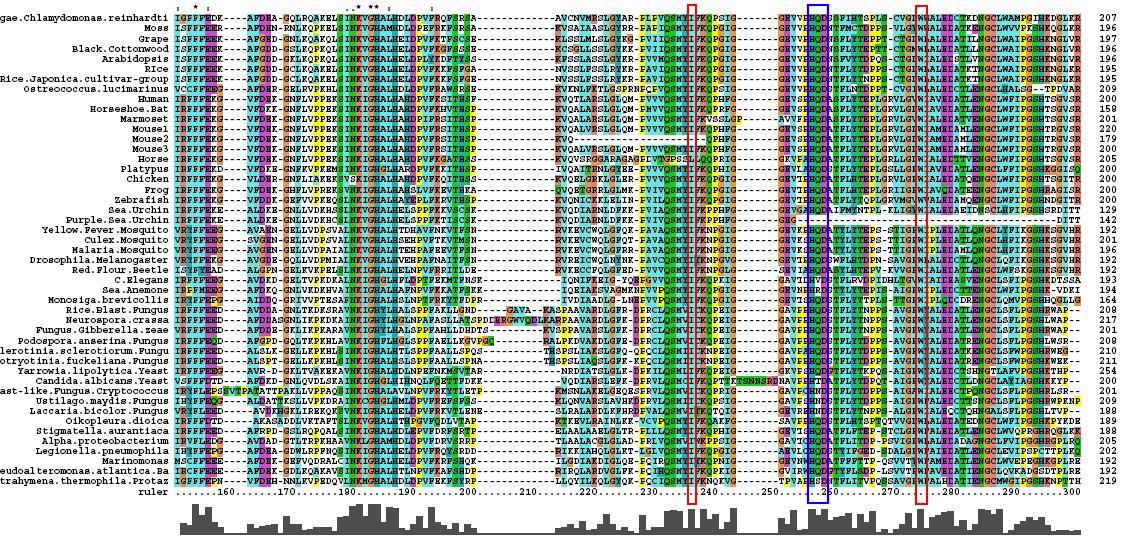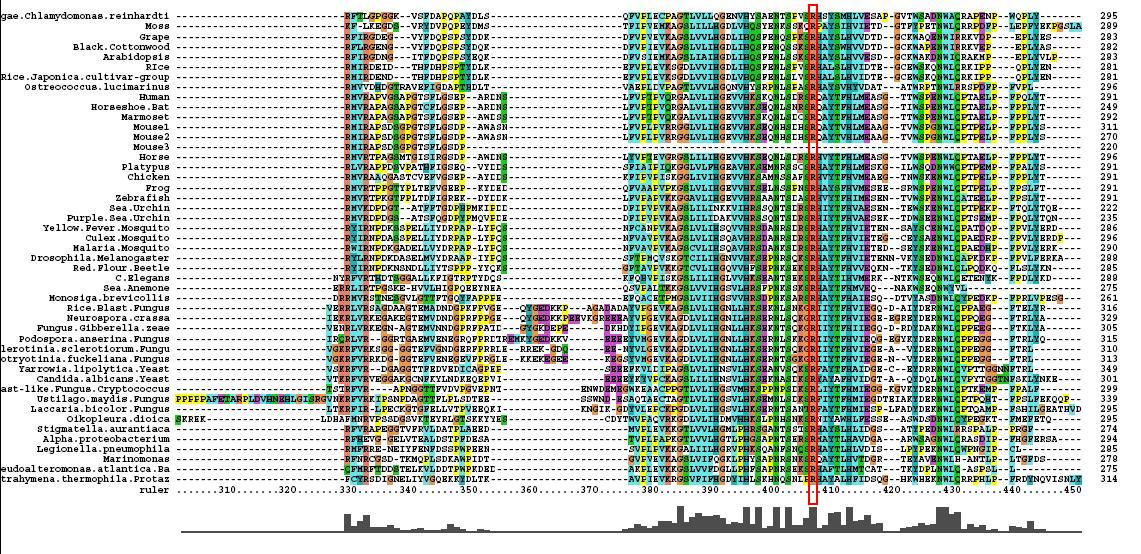Phytanoyl-CoA results
Sequence Analysis
Multiple Sequence Alignment
After conducting a BLAST search of the non-redundant databases, 46 analygous sequences were selected for comparison. A multiple sequence alignment was then performed on the sequences. The returned alignment was of an excellent quality with several section of high conservation being identified. The gene appears to be fairly well conserved across all species although the best similarity occurs with other mammalian species. This idicates that the protein is most likely to still have its functionality in most of these species which is remarkable given the broad range of both prokaryotes and eukaryotes investigated. In total there 5 residues conserved across all sequences but several more section of very high similarity. These include the iron binding sites (shown in red) and the 2OG binding site (shown in blue) as highlighted in Figure 1.
Phylogenetic Trees
Data obtained from the multiple sequence alignment could then be utilised to obtain a phylogenetic tree of the sequences and give an understanding of the evolutionary path of phytanoly-CoA gene. After initial construction of the tree, it is easily apparent that the mammals are the most evolutionary and contain the most closely related form of the phytanoyl CoA gene. This is followed by fungi which are the grouped together on the next branch of the tree. Bacteria is group further away again and lastly plants appear to be quite distantly removed from the original human gene. The two protazoans in the tree are grouped separately, one with fungi and one with bacteria, whilst the two algae are also grouped as outliers.
Abstract | Introduction | Results | Discussion | Conclusion | Method | References


